February 28 - March 5, 2016: Issue 253
TOTEM POLES
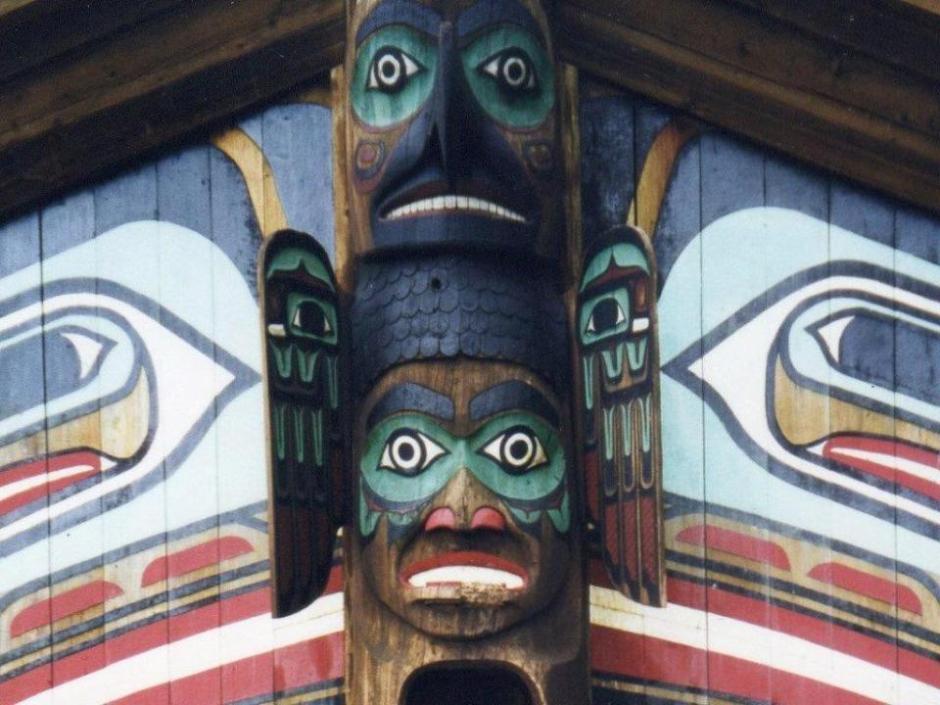
Close-up of decoration above the door to the community house.
TOTEM POLES
By George Repin
Totem poles are monumental sculptures carved by indigenous peoples of the Pacific Northwest Coast of North America (Alaska in the United States and British Columbia in Canada). Typically they are carved from the highly rot-resistant trunks of Thuja plicata (popularly known as western red cedar). They are not of religious significance but communicate aspects of native culture, such as familiar legends, clan lineages, and notable events or myths. They also may serve as architectural features, welcome signs for visitors to the village and even as mortuary receptacles. The meanings of the designs on totem poles are as varied as the cultures that made them and their placement and importance lay in the observer’s knowledge and connection to the meanings of the figures.
While widespread in the eighteenth century and into the nineteenth century carving of totem poles waned and, in part because of the region’s climate, few examples of poles carved before 1900 remain.
The construction of a totem pole is a major undertaking. After a tree is chosen and felled it is moved to the carving site where the bark and sapwood are removed. After deciding the side of the tree to be carved the back half is removed and the trunk hollowed out. Stone, shells and bones originally were the carving tools but from the early 1700s iron tools made the job easier and faster. After carving, the pole is partly painted to bring out only particular features. Generally not much paint is used because the traditional method of preparing paint is long and difficult.
The method of raising the pole was to place its end into a deep trench while supporting the other end by a wooden scaffold. Hundreds of strong men then hauled the pole up to a vertical position while others braced the pole with ropes on each side. When the pole was upright the trench was filled with rocks and dirt.
When it was realised that totem poles were disappearing through decay, and little effort was being made to preserve them, the Saxman Totem Park was established in the city of Saxman, 2.3 miles south of Ketchikan in southeastern Alaska. The park displays a collection of totem poles, twenty-four of which were relocated from abandoned Tlingit villages in the area. Other poles were reconstructed by skilled Tlingit carvers under the auspices of the Civilian Conservation Corps in 1930. The park was listed on August 7, 1979 on the U.S. National Register of Historic Places.
Ketchikan is the southeasternmost city in Alaska. It is the first stopping place of cruise ships from Seattle going north in the Inside Passage. Its economy is based on tourism, government services and commercial fishing. In 1998 230 commercial fishers were based in Ketchikan.
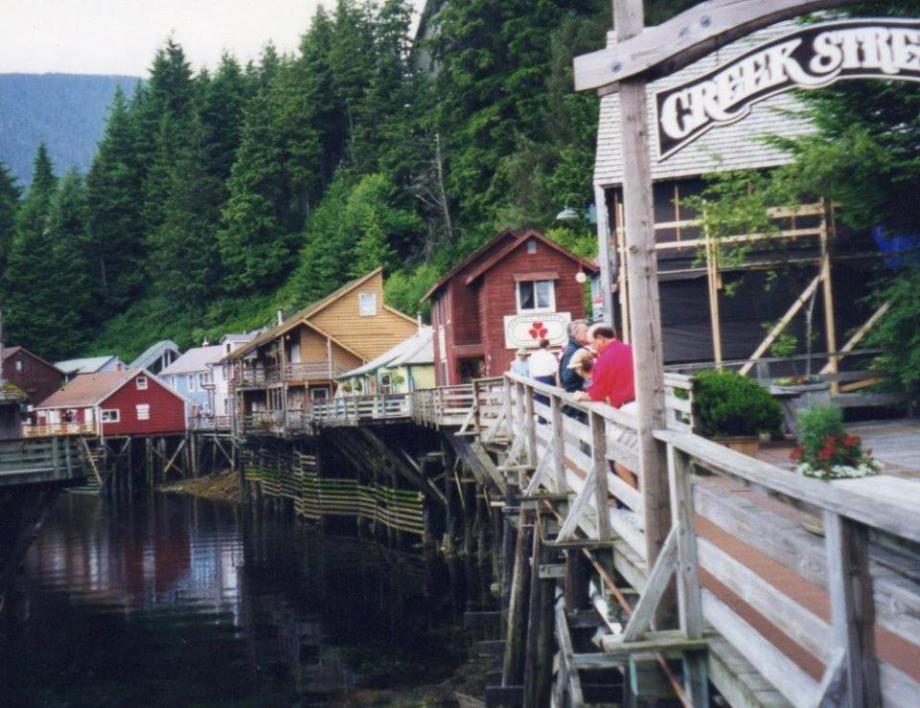
Creek Street in Ketchikan - actually a boardwalk built on pilings - for half a century the red-light district, in its heyday supporting 30 brothels.
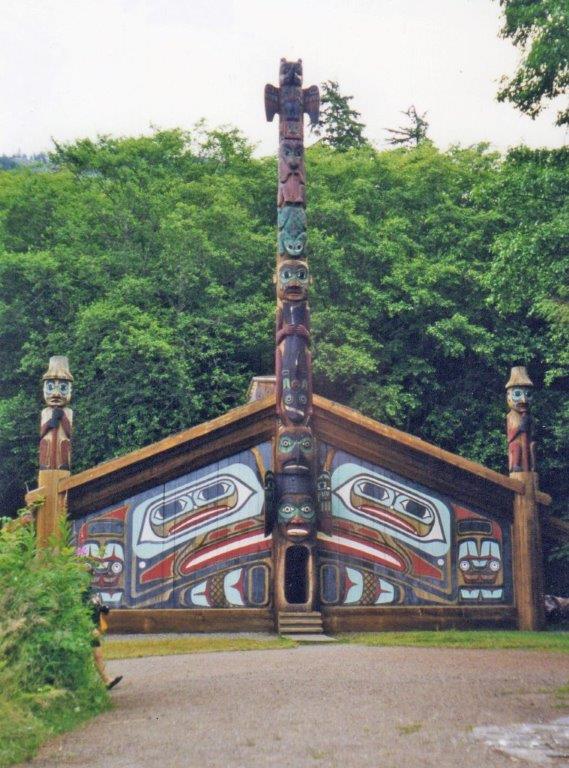
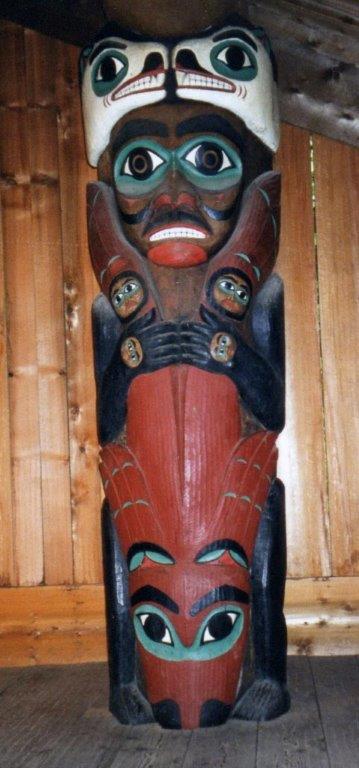
Ketchikan has the world’s largest collection of standing totem poles (approximately 80) throughout the city and at four other locations, including the Saxman Totem Park and the Totem Bight Historical State Park, north of Ketchikan at which the photographs of totem poles in this article were taken.
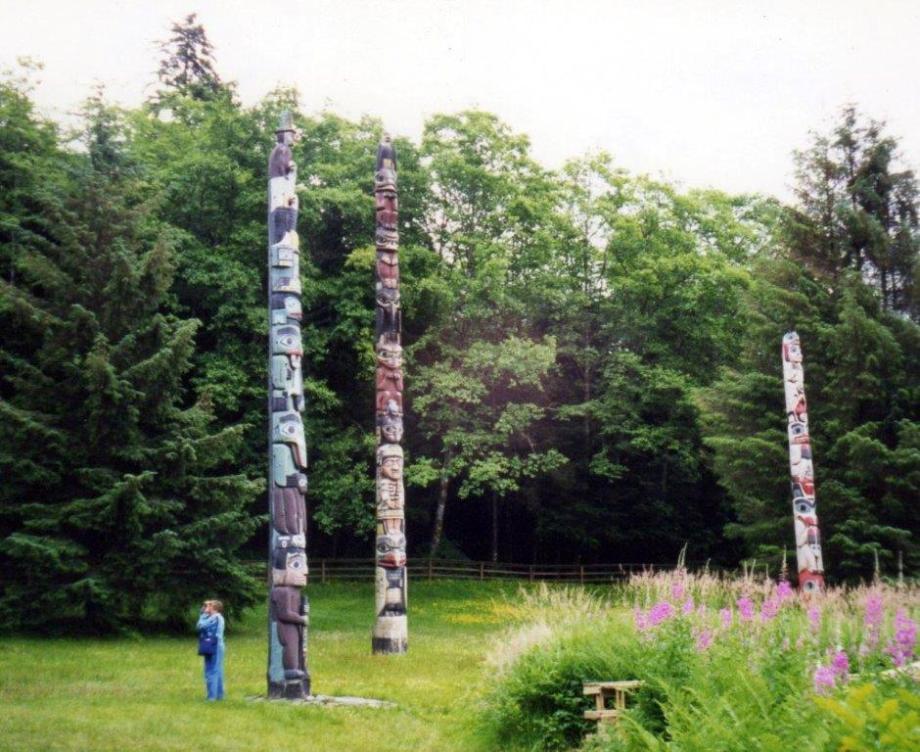
Photographs in this article were taken by George Repin in 1998.
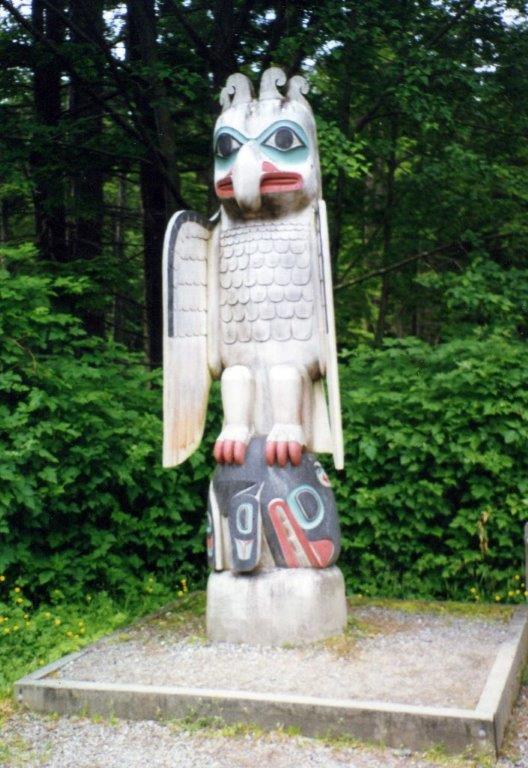
Note the base under the eagle's claws
Below: Detail of the base on which the eagle is standing
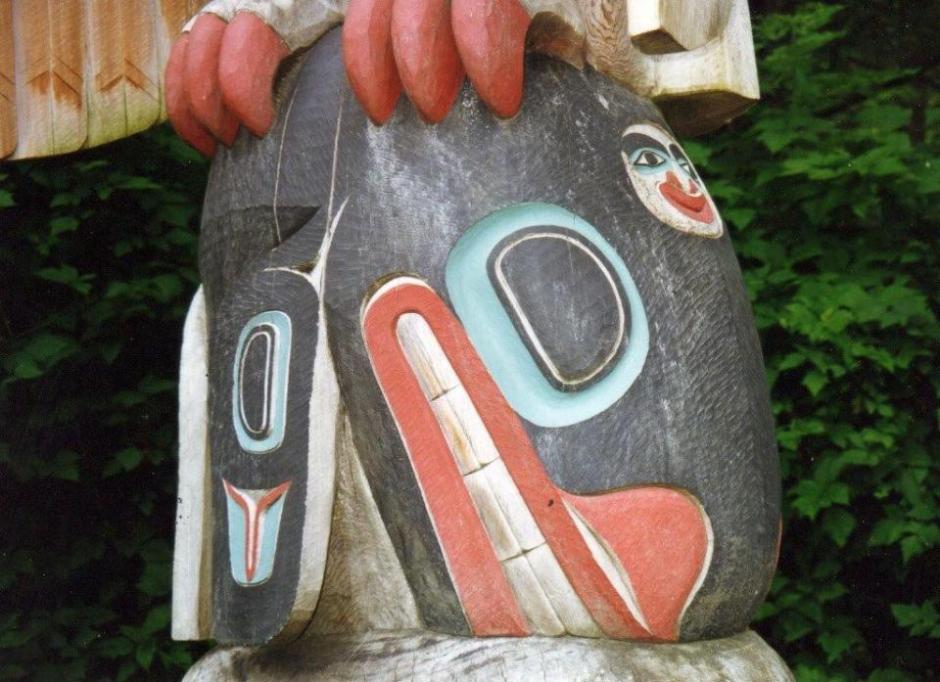
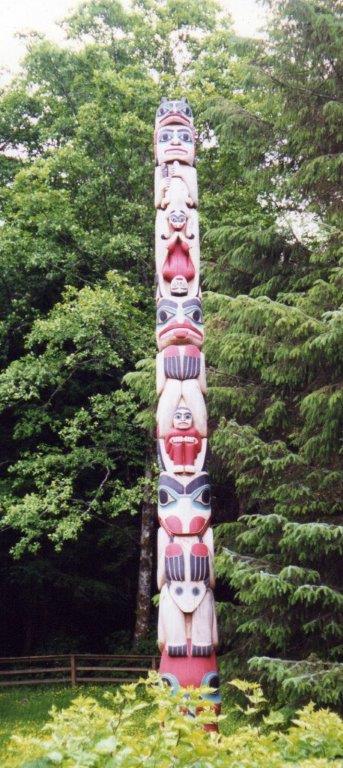
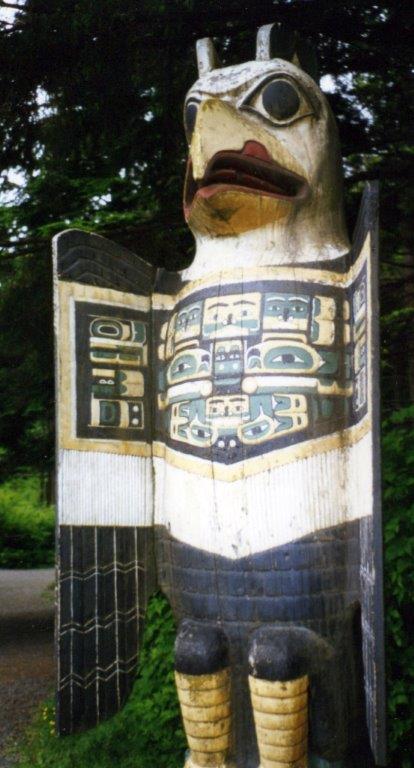
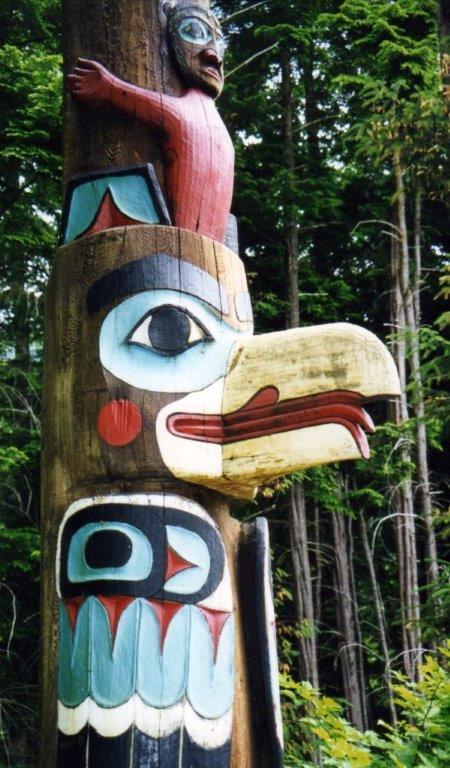
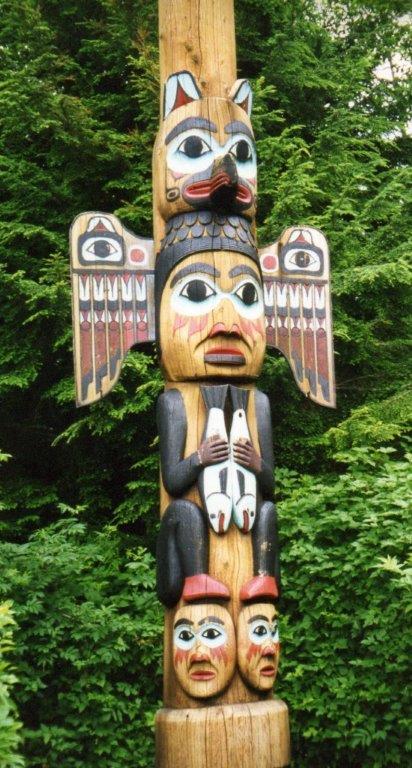
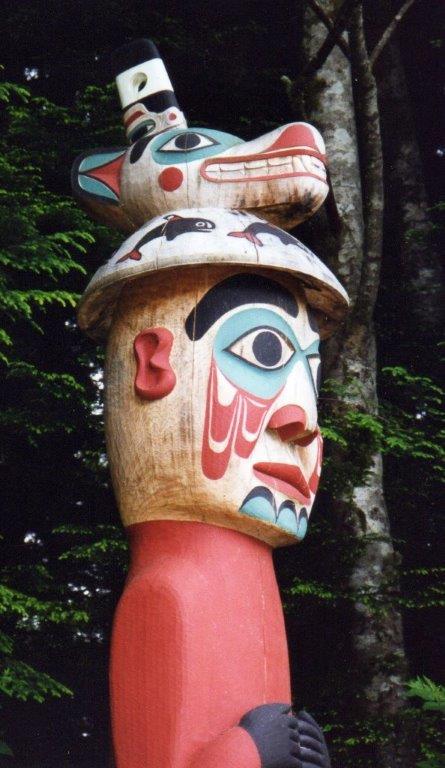
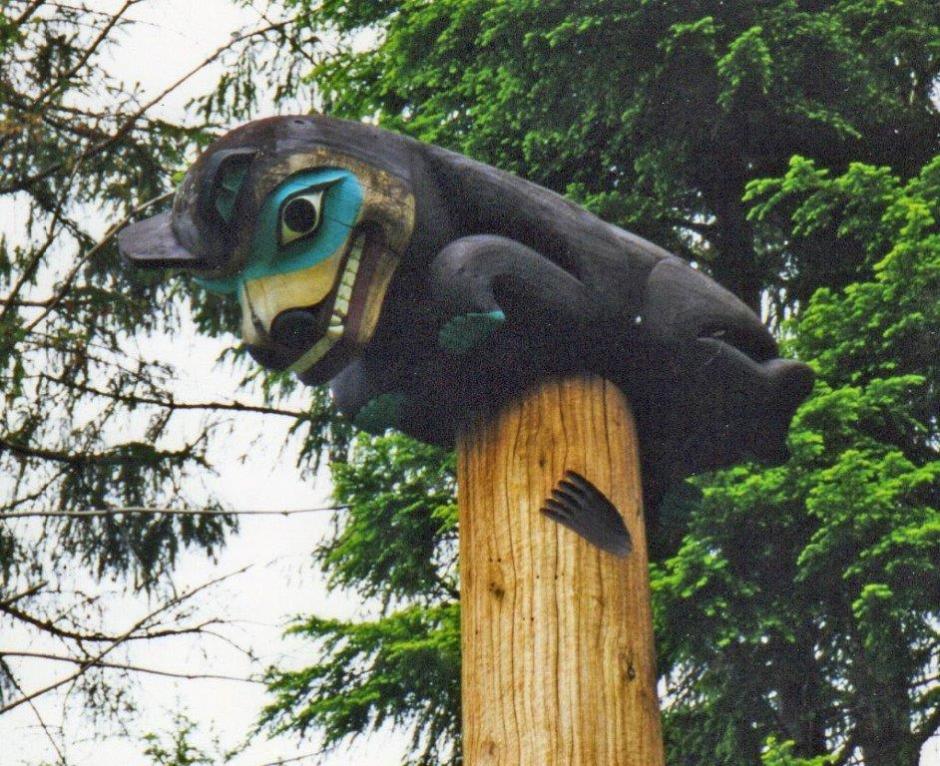
Previous Reflections by George Repin
The Nineteen Thirties Remembering Rowe Street The Sydney Push Saturday Night at the Movies Shooting Through Like A Bondi Tram A Stop On The Road To Canberra City Department Stores - Gone and Mostly Forgotten An Australian Icon - thanks to Billy Hughes Crossing The Pacific in the 1930s Hill End The Paragon at Katoomba Seafood In Sydney How Far From Sydney? Cockatoo Island Over The Years The Seagull at the Melbourne Festival in 1991 Busby's Bore The Trocadero In Sydney Cahill's restaurants Medical Pioneers in Australian Wine Making Pedal Power and the Royal Flying Doctor Service Pambula and the Charles Darwin Connection Gloucester and the Barrington Tops A Millenium Apart Have You Stopped to Look? Gulgong Il Porcellino Olympia Durham Hall Sargent's Tea Rooms Pie Shops and Street Photographers The Ballet Russes and Their Friends in Australia Hotels at Bondi Alma Ata Conference - 1978 Keukenhof - 1954 The Lands Department Building and Yellowblock Sandstone The Goroka Show - 1958 A Gem On The Quay Staffa The Matson Line and Keepsake Menus Kokeshi Dolls The Coal Mine At Balmain The Hyde Park Barracks The Changing Faces Of Sydney From Pounds and Pence to Dollars and Cents Nell Tritton and Alexander Kerensky Making A Difference In Ethiopia William Balmain J C Bendrodt and Princes Restaurant Azzalin Orlando Romano and Romano's Restaurant Waldheim Alcohol in Restaurants Before 1955 King Island Kelp The Mercury Theatre Around Angkor - 1963 Angkor Wat 1963 Costumes From the Ballets Russe Clifton at Kirribilli Chairman Mao's Personal Physician The Toby Tavern The MoKa at Kings Cross The Oceaographic Museum in Monaco The Island of Elba Russian Fairy Tale Plates Meteora Souda Bay War Cemetery Barrow, Alaska Cloisonné Tripitaka Koreana Minshuku The Third Man Photographs and Memories Not A Chagall! Did You Listen? Did You Ask? Napier (Ahuriri, Maori) New Zealand Borobudur Ggantija Temples Plumes and Pearlshells Murano University of Padua Ancient Puebloe Peoples - The Anasazi Pula The Gondolas of Venice Cinque Terre Visiting the Iban David The Living Desert Bryce Canyon National Park Aphrodisias The Divine Comedy Caodaism Sapa and local Hill People A Few Children Cappadocia Symi Jean-Marie Tjibaou Cultural Centre Aboriginal Rock Art on Bigge Island ANZAC Cove (Ari Burnu) 25 April, 1997 Hotere Garden Oputae Children of the Trobriand Islands Page Park Market - Rabaul Rabual Kotor, Montenegro Galleries of Photographs I Lascaux Galleries of Photographs II The Cathedral of St. James – Šibenik, Croatia Ivan Meštrović - Sculptor Delphi Gallery of Photographs III The Handicrafts of Chiang Mai Raft Point San Simeon - "Hearst Castle" Floriade - The Netherlands - 1982 Russian New Year Mycenae "Flightseeing" Out Of Anchorage Alaska The White Pass and Yukon Route
Copyright George Repin 2016. All Rights Reserved.